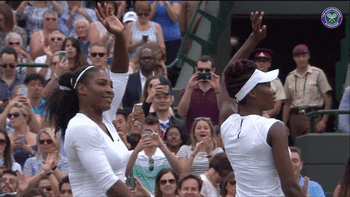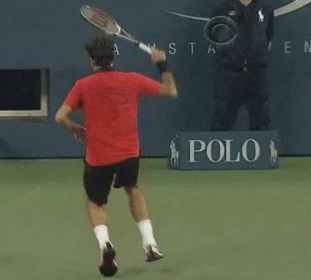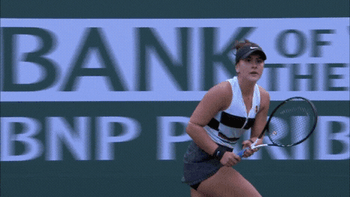Australian Open
📗 The history
The first iteration of the Australian Open dates back more than a century — the first tournament for men was held in 1905 and the first for women in 1922, run by the Lawn Tennis Association of Australasia.
- In 1927, the tournament was renamed the Australian Championships, and in 1969, the Australian Open. Initially played across multiple major Aussie cities, Melbourne was named the sole host city in 1972.
The Open struggled to find its footing in the early years, however. Because Australia is just so dang far away, many international players resisted playing Down Under. While the three other major tournaments — Wimbledon, the French Open and the US Open — seemed to have distinct identities, the Aussie Open’s renaissance really only started in the 1990s.
- Then-director Paul McNamee made it his mission to bring the Aussie Open on equal footing with its Northern Hemisphere counterparts: “We needed to be ourselves, which was a sun-drenched nation that needs to have a big casual outdoor party,” he said.
- And party they did, with the Aussie Open now drawing in the biggest names in tennis. Swiss legend Roger Federer even nicknamed the tournament the “Happy Slam.” You can’t help but smile.
✔️ The details
Now for the nitty gritty: how does this tournament work? On Thursday the 13th, 128 men’s and women’s singles players (along with 64 doubles pairs) were drawn. Those players will go through four opening rounds, leading up to the quarterfinals. The finals are set for January 29th and 30th,local time.
- While the Open was played on grass until 1988, it’s been played on (Australian Open True Blue) hardcourt surfaces since.
Now let’s talk money. The Aussie Open’s prize pot comes in at a record total of $75 million Australian dollars (aka $54.5 million USD), a 4.5% increase from last year. Singles winners will take away $4.4 million Australian dollars (aka $3.15 million USD). Very nice.
🎾 COVID-19 on the court
The Aussie Open has recently been in the global headlines, but not because of tennis. We’ve covered the COVID-19 saga in previous newsletters and podcasts, but here’s a quick refresher on what’s been going down.
- Back in November, the Open announced that only fully vaccinated players would be allowed to participate. In addition, all spectators 12 years or older would be required to be fully vaccinated or have a valid medical exemption.
Given that over 80% of the top 100 men's singles players were vaccinated by then, and that last year’s Open also operated under strict protocol, the announcement didn’t seem to pose too much of a problem. That is until notable vaccine skeptic Novak Djokovic entered the scene.
In last week’s whirlwind, Djokovic was approved for a medical exemption, detained at the border and finally released by the Australian government. Though he was included (as the No. 1 seed) in the Open’s men’s single draw on Thursday, in a shocking twist the Joker had his visa canceled again on Friday, local time. While he has another hearing lined up, we think this is it.
- The Djokovic saga has been long and winding, but TL;DR, he’s a rule-breaker. From publicly meeting folks the day after testing positive to ticking the wrong boxes on his arrival documents, the man is a mess and a half. Good riddance.
But enough about Mr. Novax Djokovic — here are the competitors you’ll actually see taking the court.
💪 Women to watch
First things first — the Williams sisters won’t be on the court. This will be the first time since 1997 (!!!) that the Aussie Open won’t feature either Venus or Serena. While this soon-to-be end of an era has us in our feelings, there are still plenty of exciting stars to watch.
No. 1 seed Ashleigh Barty: Not to be dramatic, but our love for Ash Barty knows no bounds. The world No. 1 could become the first Aussie singles champion at the Australian Open, man or woman, since 1978.
- On top of being one of, if not the, most exciting tennis players of the moment, Barty is the National Indigenous Tennis Ambassador for Tennis Australia. We love it.
No. 13 seed Naomi Osaka: But Barty might face her toughest test yet if, as predicted, she faces reigning Aussie Open champion Naomi Osaka in the Round of 16. Osaka has taken important time off from competition this past year, so we’re thrilled to see her back on the court. Lest we forget, when she’s on, she’s on.
The kids are alright: Lucky for us, the teen queens are back — the U.K.’s Emma Raducanu will look to repeat her US Open miracle in Melbourne, starting with an opening match against American princess Sloane Stephens.
- U.S. prodigy Coco Gauff enters as the No. 18 seed, and Canadian sweetheart Leylah Fernandez will compete as the No. 23 seed.
👊 Men to watch
While Novak Djokovic was drawn as the No. 1 seed on Thursday, at the time of writing on Friday, the men’s singles seeding has not been updated in response to his visa cancellation.
World No. 2 Daniil Medvedev: Watch out for Daniil Medvedev, who lost to the Joker in last year’s final. After winning the US Open in 2021, Medvedev will be looking to level up his trophy collection this year.
World No. 3 Alexander Zverev: Alexander Zverev is by all means poised for greatness. After winning at both the Tokyo 2020 Olympics and the 2021 ATP Finals, Zverev has a chance to win his first Grand Slam and make his talent undeniable.
World No. 6 Rafael Nadal: Of the last 16 Australian Open men’s titles, 15 have been won by either Djokovic, Federer or Nadal. Especially with Djokovic (probably) out, the King of Clay has a shot to take this year’s crown.
Wild Card, Andy Murray: We can’t help but root for the man. Coming back from hip surgery, Murray enters the tournament for the first time since 2019 as a wild card.
📺 How to tune in
The Open kicks off on the 17th in Australia, so tonight in North America.You can tune in on ESPN or the Tennis Channel in the U.S., and TSN in Canada. If you’d rather read along, live updates will be posted here. If The Great British Bake-Off can be live-blogged, so can tennis.
Enjoying this article? Want more?

Sign up for The GIST and receive the latest sports news straight to your inbox three times a week.


